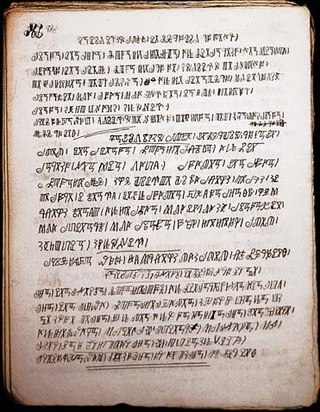Top Qs
Timeline
Chat
Perspective
Bamum language
Benue–Congo language spoken in Cameroon From Wikipedia, the free encyclopedia
Remove ads
Bamum (Shü Pamom [ʃŷpǎˑmə̀m] 'language of the Bamum', or Shümom 'Mum language'), also known as Shupamem, Bamun, or Bamoun, is an Eastern Grassfields language of Cameroon, with approximately 600,000-700,000 speakers in 2025.[3] The language is well known for its original script developed by King Njoya and his palace circle in the Kingdom of Bamum around 1895. Cameroonian musician Claude Ndam was a native speaker of the language and sang it in his music.[4]
Remove ads
Phonology
Summarize
Perspective
Bamum has tone, vowel length, diphthongs and coda consonants.
Vowels
Nchare claims ten monophthongs, only eight of which (excluding /ɔ/ and /o/) have a length distinction.[5] Matateyou shows short and long examples of all ten vowel qualities. The orthography in angle brackets is based on the General Alphabet of Cameroon Languages as used by Matateyou.[6]
Consonants
The consonants are displayed as following:[7][6]
Tones
Bamum has four[8] or five tones.[9] Mateteyou's analysis includes a mid tone, while Nchare's analysis includes downstep.[8] Bamum distinguishes between lexical and grammatical tone.[10]
Remove ads
References
Bibliography
Further reading
Wikiwand - on
Seamless Wikipedia browsing. On steroids.
Remove ads

